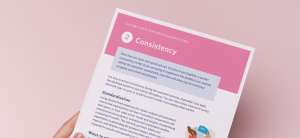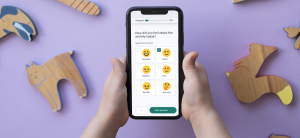Are you concerned about low response rates for your evaluations? Sometimes getting survey responses can be a difficult task. We’re here to help you review your distribution methods and establish an effective plan to maximise your sample size and engage a mix of demographics representative of your audience.
For better or worse the number of people using smartphones is consistently on the rise and the majority of people are accessible on the go via email or social media. Technological solutions make it increasingly easy to engage with audiences and collect large volumes of data at zero marginal cost.
Our number one tip is to share your survey in more than one way if possible. This helps to maximise sample sizes and engage a mix of demographics. It’s important to consider your event type and target audience to ensure distribution methods are appropriate.
Consider some of the following seven key distribution methods:
1. Ticketing database
If you have access to a ticketing database with email addresses, emailing the survey out post-event is one of the easiest and most reliable distribution methods.
It ensures that the survey is sent directly to the person who purchased the ticket (who is highly likely to have attended). This method enables a large number of responses to be collected. Many ticketing systems and CRMs make it easy to schedule a mail out to correspond with the event.
2. Intercept interviews
Completing short intercept interviews using tablets allows you to collect feedback from visitors to unticketed events/programs who aren’t contactable via ticketing or email databases. This also enables spot samples or target groups that may otherwise not complete a survey.
3. Collecting email addresses
Organisations can collect attendee email addresses to send the survey out later when tablets are beyond the budget or staffing resources are stretched. Attendees are asked to provide their email for the sole purpose of being sent a survey about their experience. Email addresses are often recorded on paper without the need for a digital device.
4. Own device survey download
Culture Count surveys can be downloaded on smartphones or tablets, meaning that event attendees are able to complete the survey on their own device. A survey link may be provided in a number of ways, including on posters, flyers, programs or screen projections.
5. Social media
Survey links can be posted on social media channels (Facebook, Instagram, Twitter) related to the event. This is useful for free events without a ticketing database and has the ability to reach large numbers of followers. Organisations can ask their followers to share the link with their connections, increasing visibility and access.
6. WiFi engagement
Many organisations are looking for new and easy ways of collecting data, including linking surveys to a WiFi network. Attendees are asked to complete a very short survey before being enabled free public access. Often WiFi infrastructure is already in place and enabling public use can generate increased digital engagement with the event and promote greater integration via social media.
7. Existing database
Survey responses can be collected using existing databases. This could include organisations e-news databases or broader membership databases. This method can be a good way to access large numbers of people but can exclude international and interstate visitors, or first-time visitors, who have not previously registered their interest via a database.







